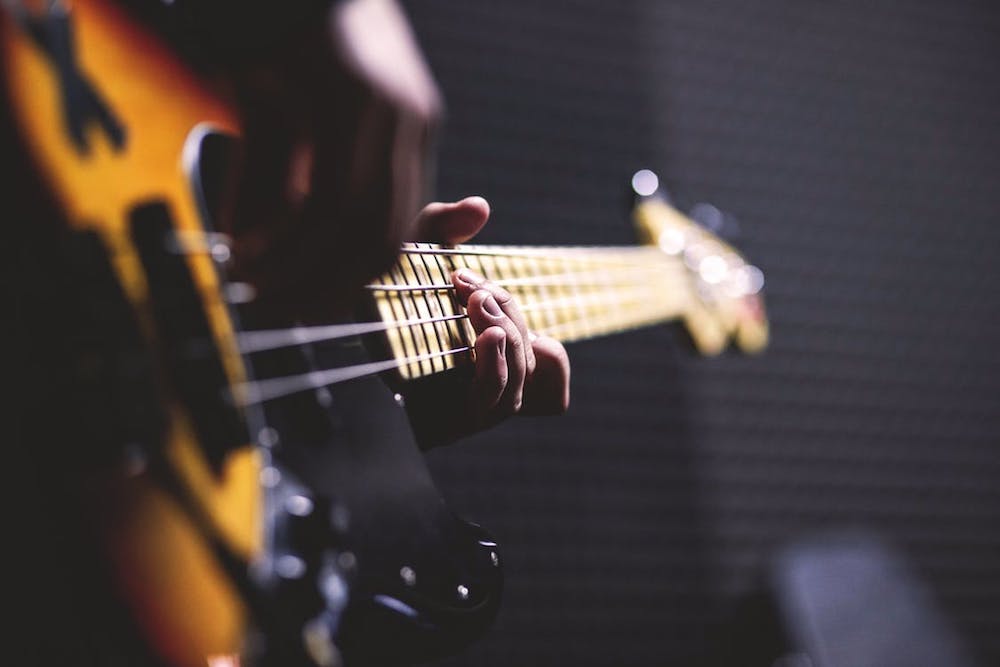Nailing the low end content in a mix is an important step for better-sounding material. Too much bottom can make a mix muddy and inarticulate; too little can make a track appear thin and lifeless. Learning how to EQ bass guitar appropriately can take your work from “so-so” to “great”!
Mixing is more art than science, so the following steps should be considered rough guidelines to get the best sounding low end out of your bass guitar. There are few “rules” when it comes to a great mix, but having a starting point to EQ bass guitar can fast-track your workflow. As always, if it sounds good, it is good!
High. Pass. Filter!
A common mistake made by beginning mixers is neglecting the high pass filter (HPF) when it comes to bass guitar or other low-end instruments. A high pass filter, as its name suggests, allows higher end material to pass through: that is, it rolls off the low end. Many mixers and consoles have a HPF in their channel strip, often somewhere around 80 Hz. Engaging the HPF, in this case, rolls off all the material at 80 Hz and below, letting everything above 80 Hz through. This is particularly useful when recording instruments with little low end, like a hi-hat. For a vocalist, the only sound around 80 Hz is rumble from the mic stand. Roll it off!
It’s important to remember, though, that HPFs are not solely reserved for instruments with midrange and high frequency content. Using a HPF to gently roll off the sub-bass content on a bass guitar can drastically clean up a mix’s bottom end.
Engaging a HPF on a bass guitar somewhere between 40 and 50 Hz can make a world of difference. It’s important to remember that a buildup of sub-bass content is often undesirable. All of the low-end material in a mix melds into a muddy, inarticulate mess that makes instruments difficult to distinguish. Also, many consumer speakers are not designed to reproduce the sub-bass way down at 20 Hz and up to 60 Hz. Clean it up with a HPF!
Don’t forget to low pass, too
A bass guitar’s fundamental frequencies lie somewhere between 60 Hz and 1 kHz, with additional overtones extending as high as 5 kHz. Beyond that, there isn’t much useful harmonic information in the bass’s signal. In this instance, a low pass filter (LPF) is a powerful tool.
Just as a HPF rolls off the low end, a LPF rolls off the high end. Because little essential harmonic content exists beyond 5 kHz on a bass guitar, filtering the high end further places the instrument in its own space and out of competition with midrange-dominant mix elements.
Let the kick and bass work together
It’s up to the mixer’s discretion and the genre, but it’s generally understood that choosing either the kick drum or the bass guitar to lead the bottom end is a necessary move. If you level and EQ both similarly, the two end up fighting for space in the mix, again creating an inarticulate low end.
In many cases, EQ’ing the kick and bass guitar opposite one another gives each its own space. That is, if you boost the kick at 100 Hz, you may want to cut the bass guitar at 100 Hz. If you add punch to the bass guitar at 500 Hz, cutting the kick at 500 Hz ensures the two aren’t competing for mix space.
Your specific EQ moves will likely depend on which instrument you’ve chosen to lead the low-end groove, but the two should work together and not overshadow one another.
Key Frequency Ranges to EQ Bass
These four approximate ranges are a cheatsheet or sorts to orientate yourself before you begin mixing bass guitar. There are always exceptions, of course, but these are an excellent starting point in understanding which frequencies do what to a bass.
- 80 – 200 Hz: Fullness. Boosting here adds depth and body, solidifying a robust low end.
- 200 – 300 Hz: Muddiness loves to live in the 200 to 300 Hz range. If you find your bass guitar lacks clarity, try cutting frequencies in this range to clear things up. This is also true of an entire mix. If your overall product is muddy, try cutting a tad between 200 and 300 Hz on the mix buss.
- 500 – 1000 Hz: Punchiness. If you need more low-mid grind from your bass, try boosting in this range.
- 2.5 – 5 kHz: Attack. Boosting in this range will give your bass guitar more bite in the upper overtones.
Between high and low pass filters, understanding the relationship between bass and kick drum, and familiarizing yourself with important frequency ranges, we hope that learning how to EQ bass isn’t so daunting after all.
The best thing to do, though, is jump in and practice! As with most things in life, over time, you’ll develop tricks that suit your workflow and style. Happy mixing!
